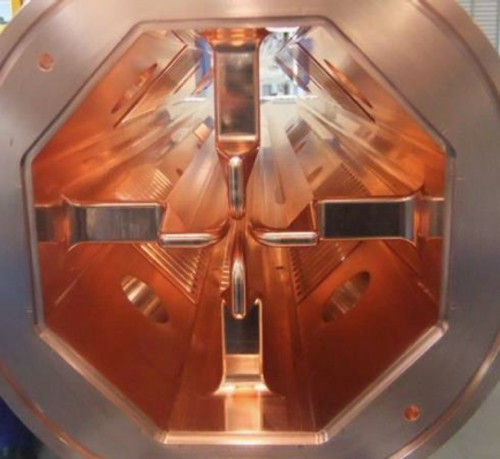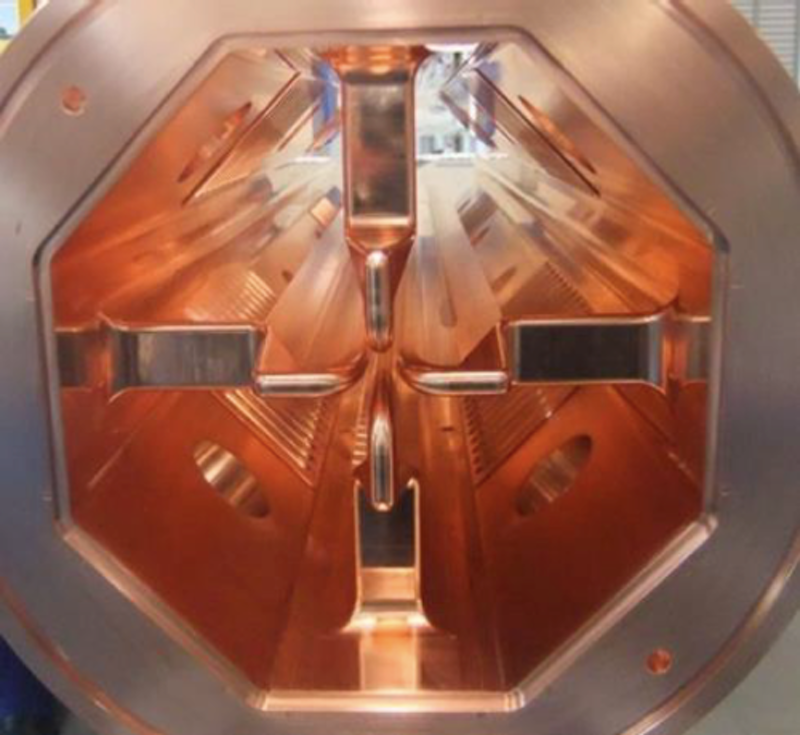Comprehensive Measurement of an Ion Beam
Particle accelerators are used in high-energy physics research, in cancer treatment, and in many other areas. To further improve these beams, researchers need to measure their properties in detail, but these properties are surprisingly tricky to characterize all at once. A research team has now made the first comprehensive measurements of a particle beam. The technique they used might help researchers design and optimize the instruments and methods needed to produce particle beams, ultimately improving their efficiency and allowing yet more intense beams to be created.
Particle beams are continually being studied and improved. Many proposed uses demand beam intensities 10 to 100 times greater than those of existing machines, says graduate student Brandon Cathey of the University of Tennessee in Knoxville. In order to refine designs with computer simulations, researchers need accurate data on beam properties as a starting point, but measuring all of those properties at once has not been possible.
A particle beam is fully described by six parameters: particle positions in the beam cross section (horizontal and vertical), their respective momenta, the particle energy, and a parameter called the particle’s phase that is determined by its arrival time at a detector. There are thus six coordinates to a complete description of the beam: a six-dimensional (6D) distribution.
Previous efforts to characterize particle beams have measured at most four of these parameters simultaneously, and they relied on the assumption that all of the parameters are independent in order to derive a complete description. In 2004, Alexander Aleksandrov of Oak Ridge National Laboratory in Tennessee and a colleague proposed an approach [1] to the full 6D measurement that he and his collaborators have now finally put into practice. They have analyzed the negative hydrogen ion ( ) beam of the Spallation Neutron Source (SNS) Beam Test Facility at Oak Ridge.
In effect, the method uses six moveable slits located along the beamline. Each one admits just those particles whose value of a specific parameter falls within a narrow range. In the case of the slit that measures energy, the team diverts the beam with a magnetic field. The angle of diversion depends on the energy, so only particles with a particular energy range will pass through the energy slit.
In this way, the various slits can be slowly scanned through each of the parameters in turn, so that the particle detector at the end of the “obstacle course” of slits gradually builds up a picture of the 6D distribution. The researchers collected more than 5.5 million data points throughout the 6D coordinate space over a period of 32 hours.
One key question is whether the six characteristics are truly independent or whether there are correlations between them—for example, the distribution of particle energies might depend on location within the beam cross section. Spotting correlations in this high-dimensional data set is a formidable challenge for which no rigorous mathematical method yet exists. But the researchers could see that such an energy-position correlation was present simply by inspecting lower-dimensional presentations of the data.
“Now that we have a full 6D measurement, we can run simulations that start with realistic beam parameters,” says team member Cathey. “Increased simulation reliability will improve operations of existing machines and allow better designed, higher-powered future accelerators.”
“As a beam dynamics scientist I find the results very exciting and new,” says Sven Reiche, whose job involves characterizing the electron beam at the Swiss Free Electron Laser at the Paul Scherrer Institute in Villigen. However, he says that long measurement times are impractical for daily beam characterization at a facility like his. Cathey agrees that “most places will not have that luxury,” but he hopes that better simulations derived from the new technique will help all beam facilities. Besides, he adds, “scans over only a few dimensions require much less time—we did 5D scans in four hours.”
Wolfgang Hillert of the DESY synchrotron facility in Hamburg, Germany, agrees that “a detailed knowledge of 6D distributions would be very helpful in understanding and optimizing accelerator performance.” He adds that, for electron beams at least, there is at least one other method in development that looks more promising, although it has yet to be implemented [2].
Ultimately, the ability to characterize a particle beam fully can make its usage more efficient, says Reiche—which means that more science can be done with it.
This research is published in Physical Review Letters.
–Philip Ball
Philip Ball is a freelance science writer in London. His latest book is How Life Works (Picador, 2024).
References
- V. Danilov and A. Aleksandrov, “Beam Invariants for Diagnostics,” in Proceedings of EPAC 2004, p. 1518; [PDF].
- D. Marx et al., “Longitudinal Phase Space Reconstruction Simulation Studies Using a Novel X-Band Transverse Deflecting Structure at the SINBAD Facility at DESY,” arXiv:1802.05006.





